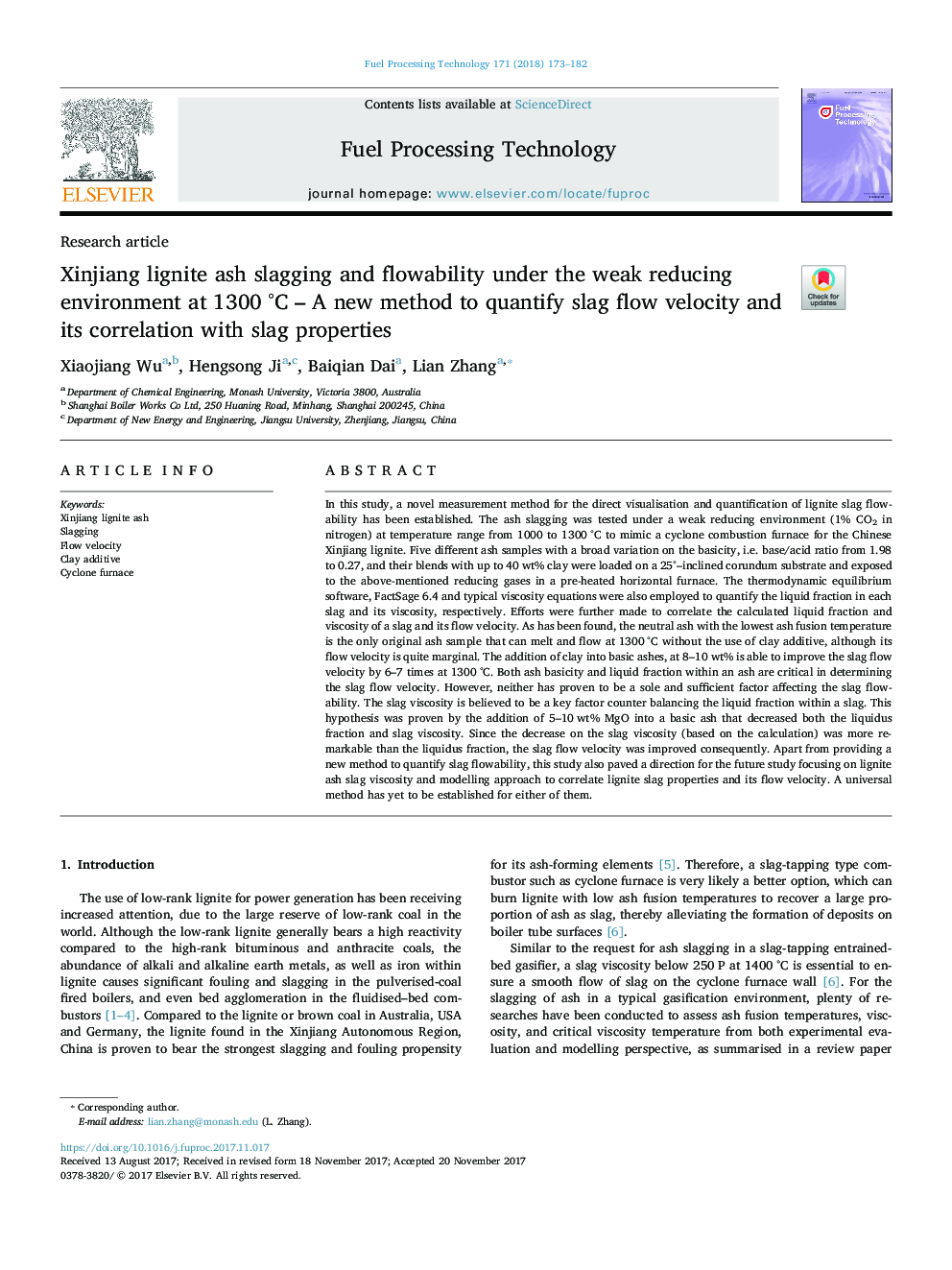| کد مقاله | کد نشریه | سال انتشار | مقاله انگلیسی | نسخه تمام متن |
|---|---|---|---|---|
| 6656514 | 1425375 | 2018 | 10 صفحه PDF | دانلود رایگان |
عنوان انگلیسی مقاله ISI
Xinjiang lignite ash slagging and flowability under the weak reducing environment at 1300 °C - A new method to quantify slag flow velocity and its correlation with slag properties
دانلود مقاله + سفارش ترجمه
دانلود مقاله ISI انگلیسی
رایگان برای ایرانیان
موضوعات مرتبط
مهندسی و علوم پایه
مهندسی شیمی
مهندسی شیمی (عمومی)
پیش نمایش صفحه اول مقاله

چکیده انگلیسی
In this study, a novel measurement method for the direct visualisation and quantification of lignite slag flowability has been established. The ash slagging was tested under a weak reducing environment (1% CO2 in nitrogen) at temperature range from 1000 to 1300 °C to mimic a cyclone combustion furnace for the Chinese Xinjiang lignite. Five different ash samples with a broad variation on the basicity, i.e. base/acid ratio from 1.98 to 0.27, and their blends with up to 40 wt% clay were loaded on a 25°-inclined corundum substrate and exposed to the above-mentioned reducing gases in a pre-heated horizontal furnace. The thermodynamic equilibrium software, FactSage 6.4 and typical viscosity equations were also employed to quantify the liquid fraction in each slag and its viscosity, respectively. Efforts were further made to correlate the calculated liquid fraction and viscosity of a slag and its flow velocity. As has been found, the neutral ash with the lowest ash fusion temperature is the only original ash sample that can melt and flow at 1300 °C without the use of clay additive, although its flow velocity is quite marginal. The addition of clay into basic ashes, at 8-10 wt% is able to improve the slag flow velocity by 6-7 times at 1300 °C. Both ash basicity and liquid fraction within an ash are critical in determining the slag flow velocity. However, neither has proven to be a sole and sufficient factor affecting the slag flowability. The slag viscosity is believed to be a key factor counter balancing the liquid fraction within a slag. This hypothesis was proven by the addition of 5-10 wt% MgO into a basic ash that decreased both the liquidus fraction and slag viscosity. Since the decrease on the slag viscosity (based on the calculation) was more remarkable than the liquidus fraction, the slag flow velocity was improved consequently. Apart from providing a new method to quantify slag flowability, this study also paved a direction for the future study focusing on lignite ash slag viscosity and modelling approach to correlate lignite slag properties and its flow velocity. A universal method has yet to be established for either of them.
ناشر
Database: Elsevier - ScienceDirect (ساینس دایرکت)
Journal: Fuel Processing Technology - Volume 171, March 2018, Pages 173-182
Journal: Fuel Processing Technology - Volume 171, March 2018, Pages 173-182
نویسندگان
Xiaojiang Wu, Hengsong Ji, Baiqian Dai, Lian Zhang,